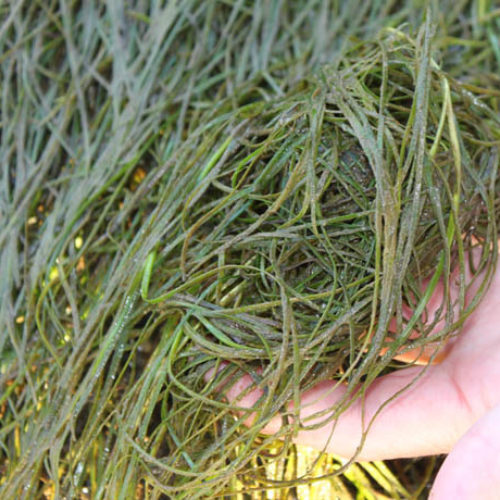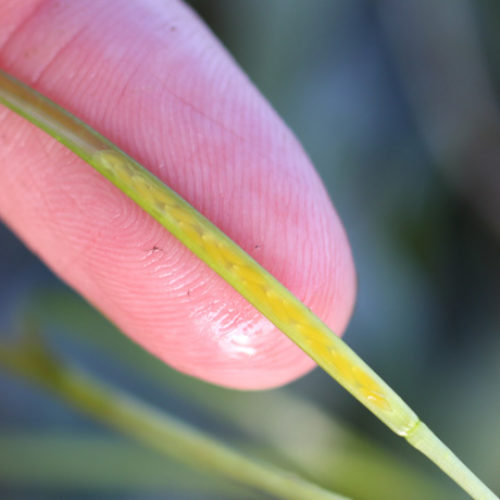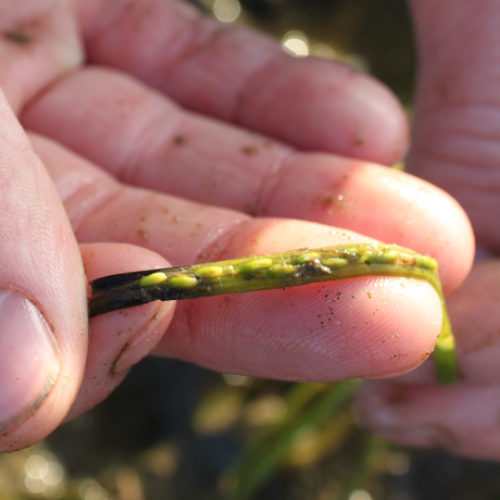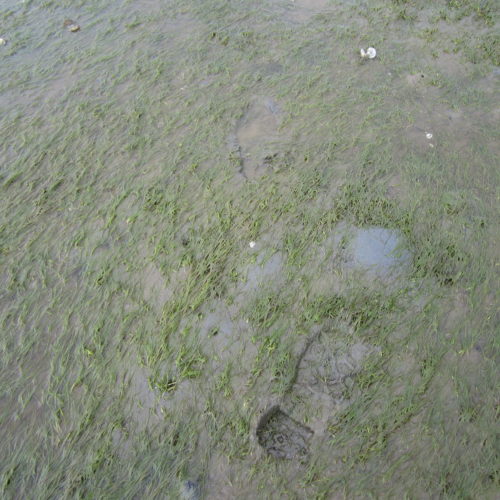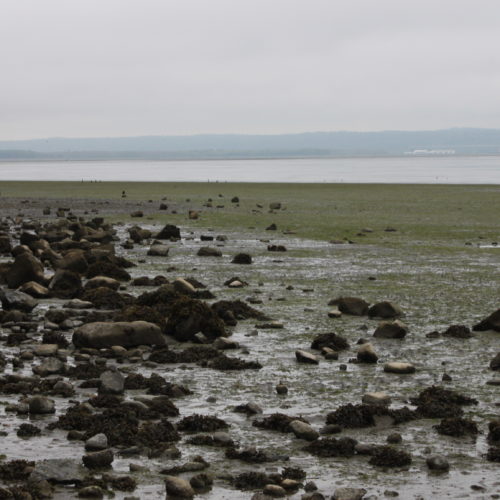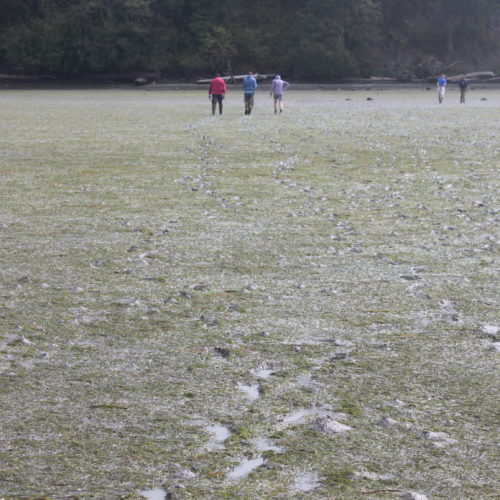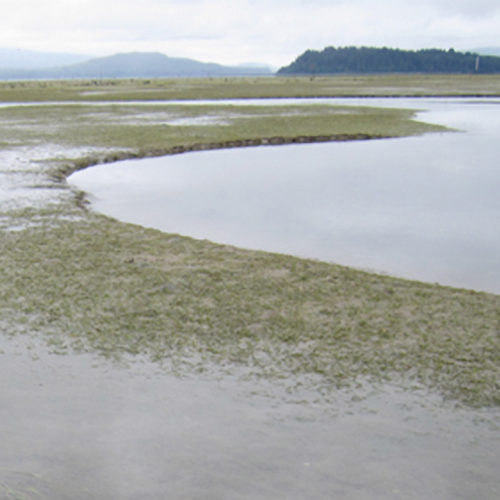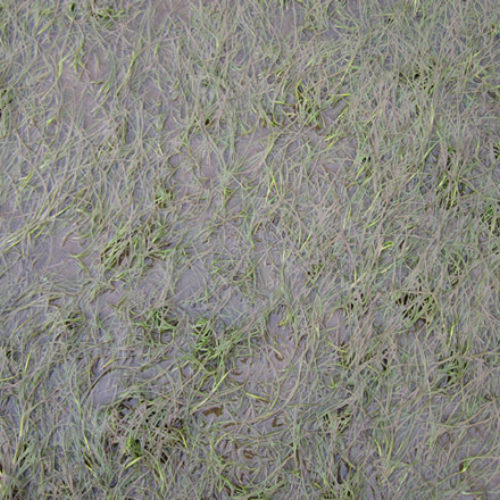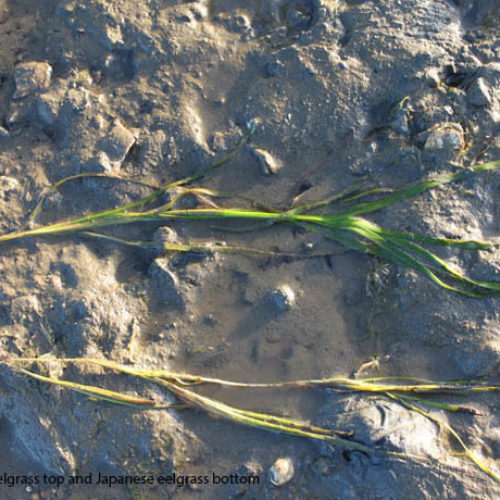Japanese Eelgrass
Nanozostera japonica
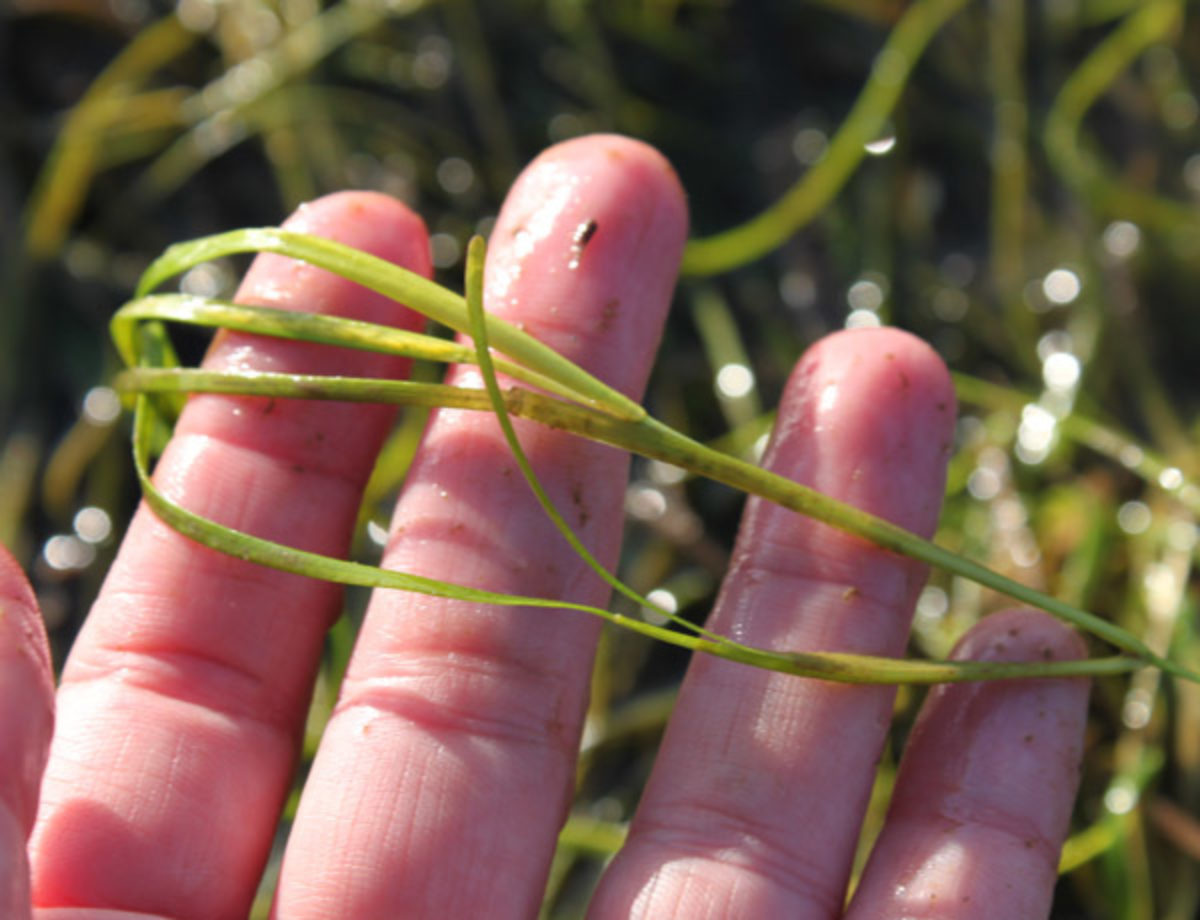
Family: Zosteraceae
Other Scientific Names:
Zostera japonica
Other Common Names: japonica, dwarf eelgrass
Weed class: C
Year Listed: 2012
Native to: Asia, specifically the far east of the Russian Federation, China (Hebei, Liaoning and Shandong), Japan, Korea, Taiwan and Vietnam
Is this Weed Toxic?:
not known to be
Why Is It a Noxious Weed?
Japanese eelgrass is non-native, difficult to control and negatively impacts the shellfish industry. It was listed as a Class C noxious weed on commercially managed shellfish beds only.
How would I identify it?
General Description
Japanese eelgrass is an annual to perennial, aquatic, herbaceous plant with stems growing up to around 12 inches.
Flower Description
Male and female flowers alternating in two rows on a thickened stem (spadix). Flowers are without petals and sepals and are small. Each male flower has a single anther and each female flower a pistil with 1 style and 2 stigmas.
Leaf description
Leaves are alternately arranged and have open sheath that have 2 membranous flaps. Blades are variable in length and can be up to 13.5 inches and are very narrow (1-1.5 mm).
Stem description
Stems are mostly unbranched and generally grow around 4 to 12 inches long.
Fruit Seed Description
Fruits are urticles, ellipsoid and beaked, 2.5 mm long and have one seed.
May Be Confused With
Native common eelgrass Zostera marina.
Where does it grow?
It grows in intertidal marine waters in open tidal mudflats and sandflats, generally growing from 0.1 to 1.5m mean lower low water (MLLW). Japanese eelgrass generally grows higher in the intertidal zone than the native, common eelgrass (Zostera marina). The two species can also grow in an intermixed, mosiac pattern on mudflats with variable elevations. Please click here to see a county level distribution map of Japanese eelgrass in Washington.
How Does it Reproduce?
It reproduces vegetatively by rhizomatous growth and it produces seeds.
For More Information
See our Written Findings for more information about Japanese eelgrass (Zostera japonica).
View the white paper Invasion of Japanese eelgrass, Zostera japonica in the Pacific Northwest.
2013 Non Native Eelgrass: Zostera japonica workshop.
2010 Zostera japonica Workshop report.
Whatcom County NWCB Fact Sheet on Japanese eelgrass



